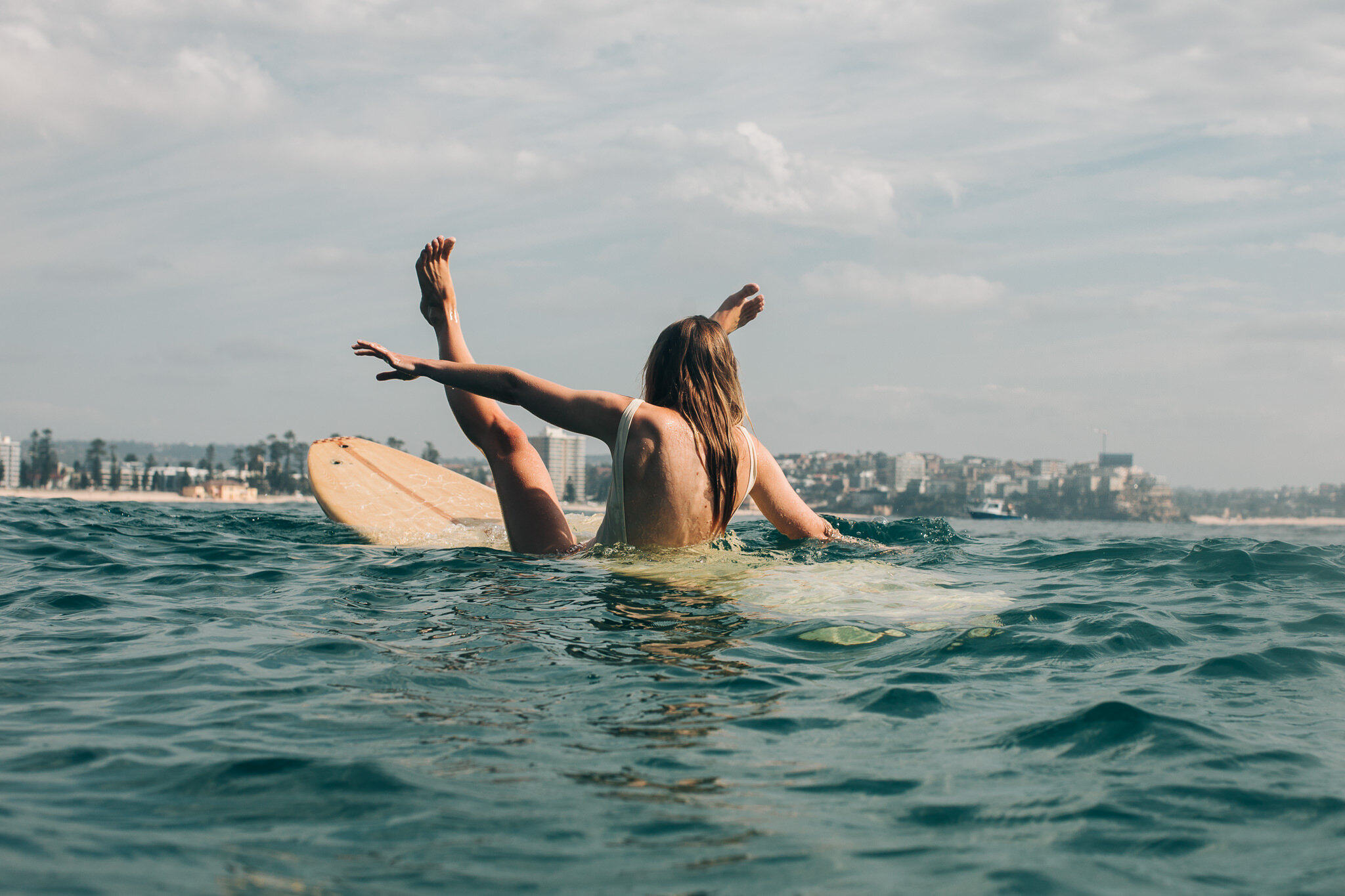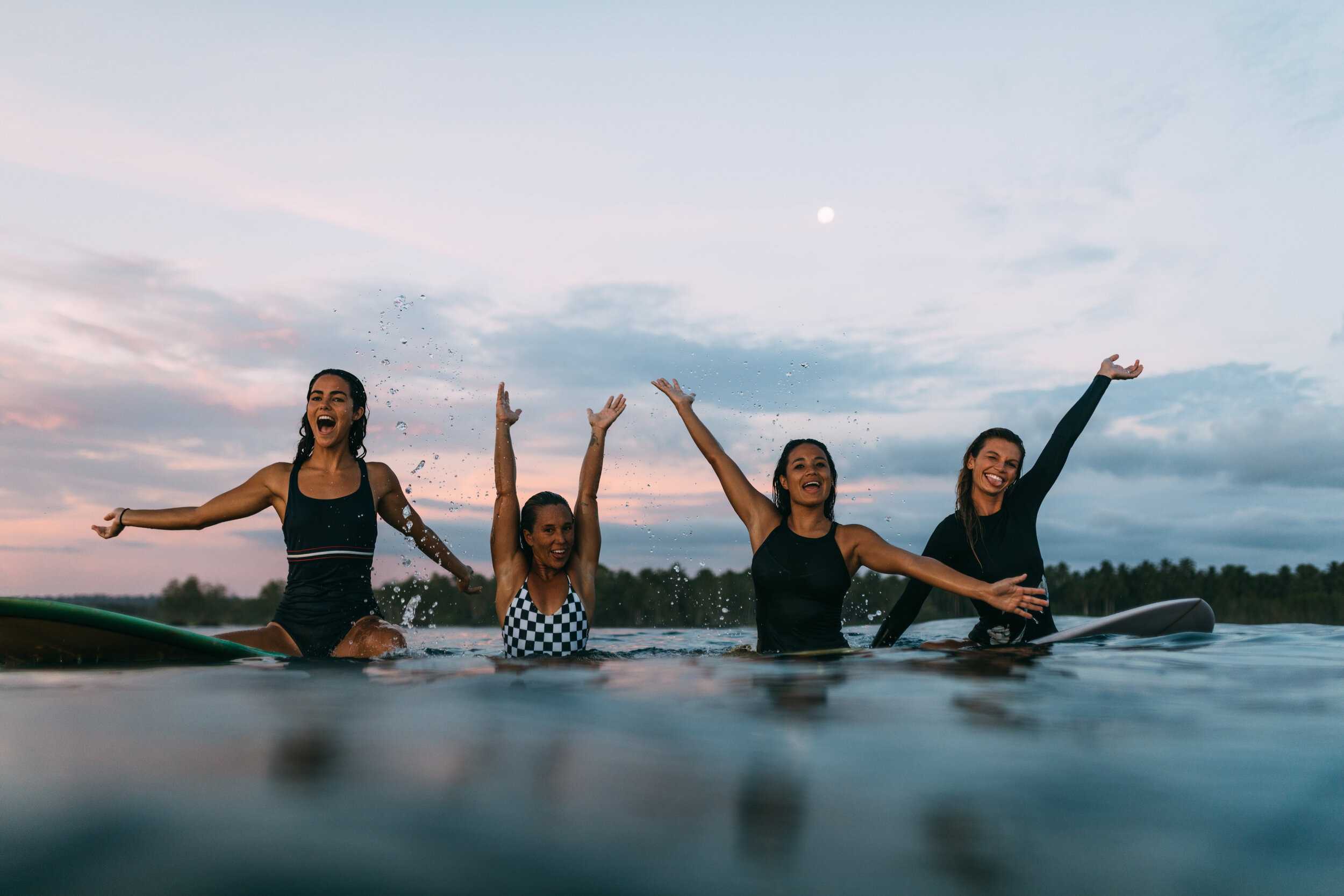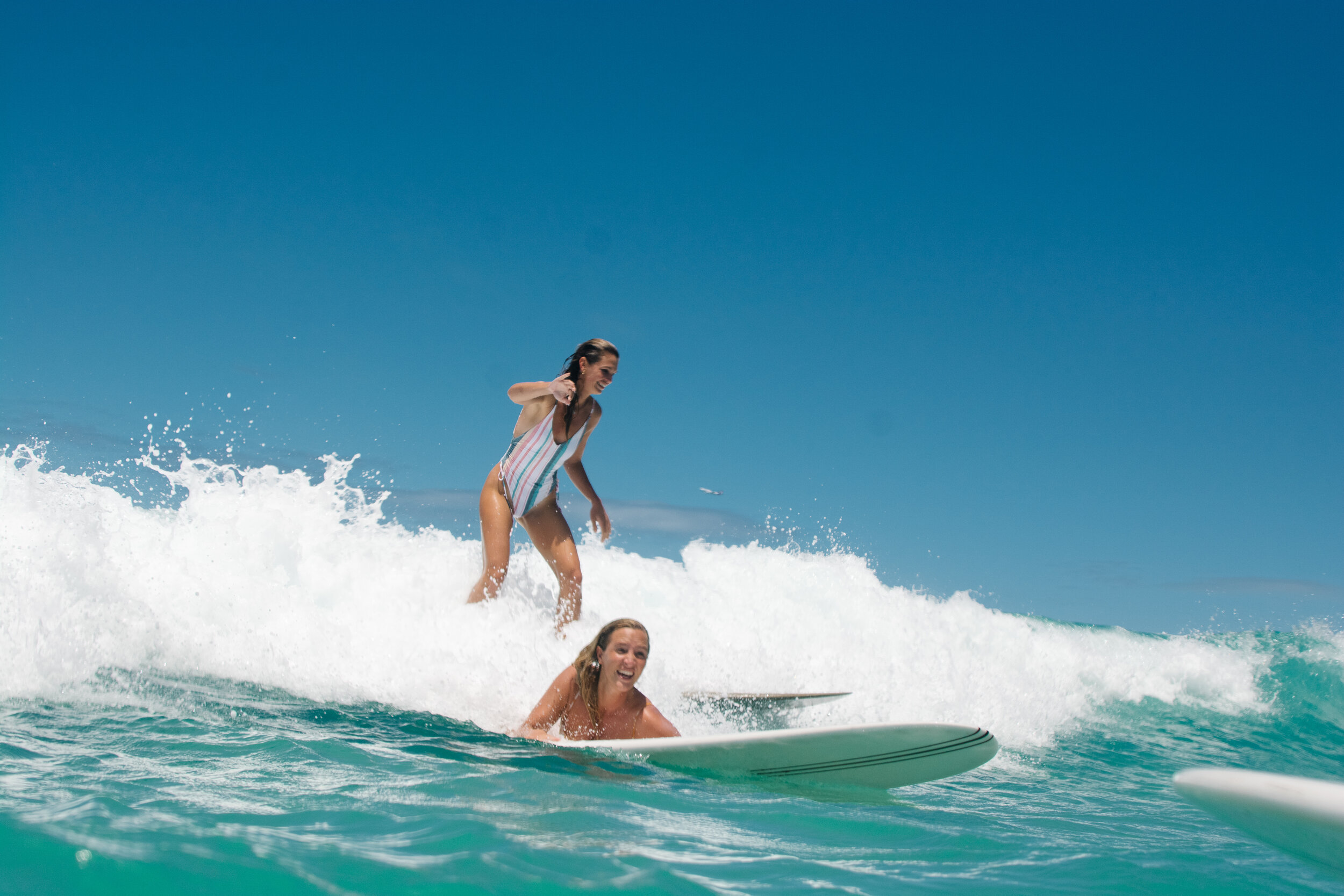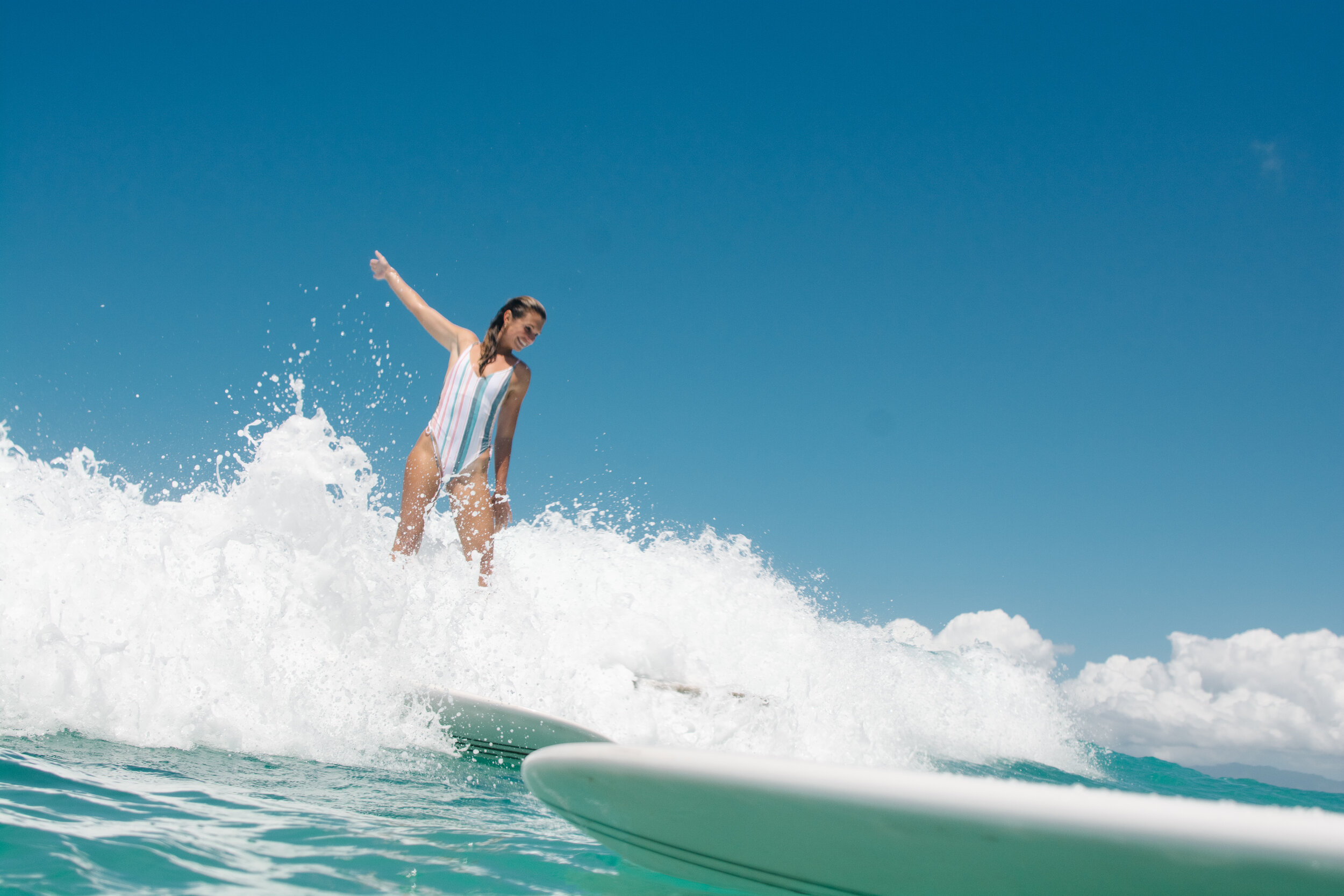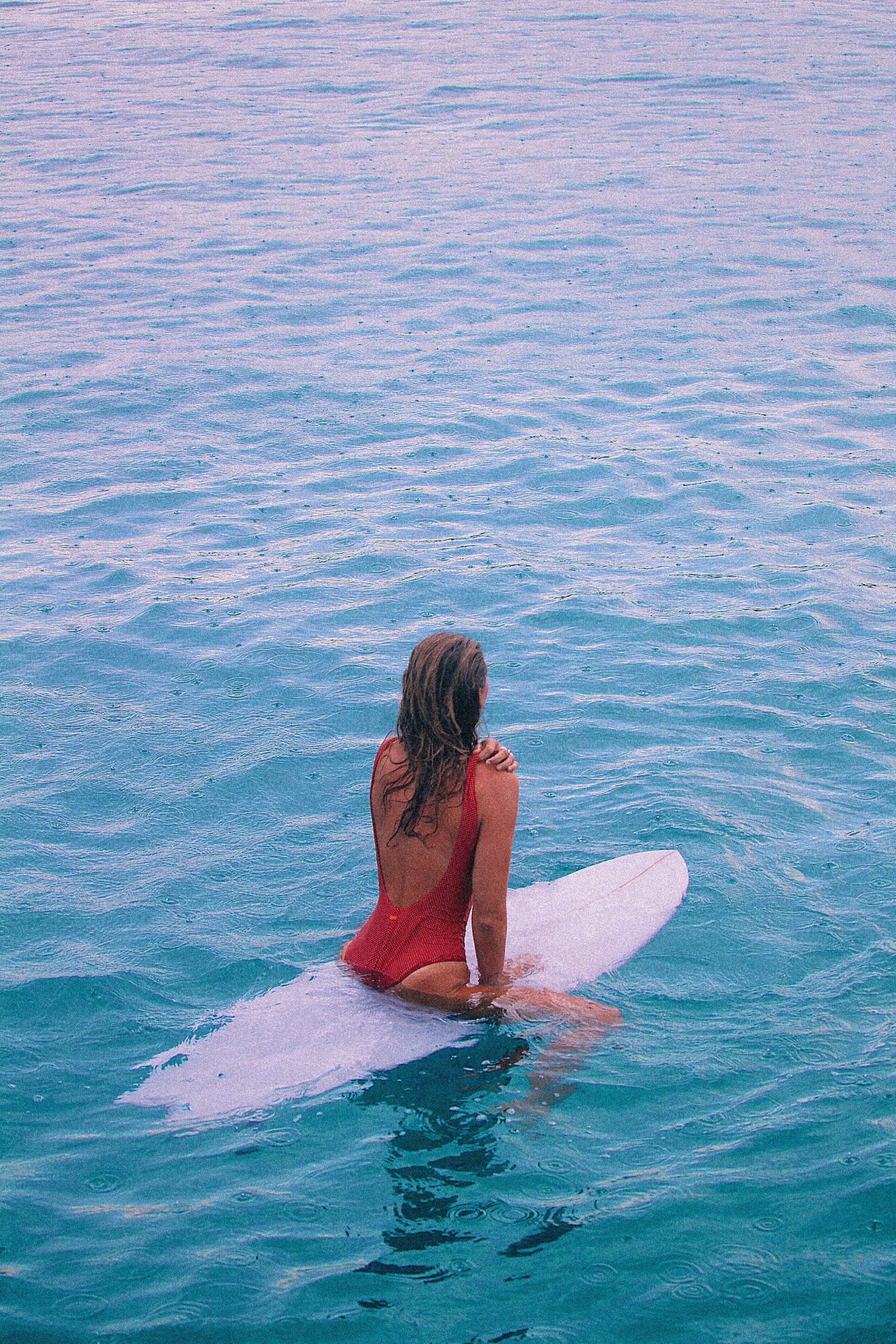Frustrations of a surfer: 21 struggles we all go through
The good, the bad, and most of all, the ugly & embarrassing. Surfing can give you the highest highs, but we tend to forget to mention the lows we have to go through to get there. From sand in your swimmers to swear words in the sea, here are 21 times your frustrations got the best of you.
I’ve rounded up all the fails, struggles, frustrations and little annoyances we’ve all experienced at least once in our budding surfing careers. While none of us claim to be Kelly or Steph, it’s good to know that, in the mean time, there’s a fail for every beginner, intermediate or advanced kook out there.
I’m sure you’ll recognise yourself in at least one of these, they’re a round up of a Q&A I did on the good ol’ gram.
21 Struggles Every Surfer Goes Through
1. “I see the perfect wave come up towards me, and I look at the drop and freeze”
Ah, good ol’ commitment. It gets the best of us. No matter how perfect the wave, if you don’t commit you could end up more hurt then if you actually went for the wave and fell off. The drop is sometimes (actually, most of the time) the hardest part after taking off. Best advice is to look forward, not down. Squeeze your legs together when you start paddling and lift your shoulders off the board, look straight ahead.
2. “I let myself get intimidated by other surfers and don’t catch any waves”
There is no need to feel intimidated in the surf. I know its extremely easy to feel like the kook or odd one out, but just remember that everyone started somewhere, and the fact that you simply paddled out and made it to the lineup is achievement enough. No one will ever make fun of you for trying. If they do, well, they probably don’t have many friends. Surfing is to be enjoyed by all, no matter the age, gender or skill level. Next time try surfing with a friend or two, being in a group always boosts confidence.
3. “Paddling”
Ha! Paddling is hard. But you do get stronger, and it does get easier. This is when yoga comes in handy. My surfing improved when I started incorporating upper body strength exercises in yoga. Chaturangas (high-to-low-planks) and arm balances really helped with shoulder mobility and stability.
Just remember to engage your back muscles, and try lift your shoulders off the board. Make sure your fingers are firmly together, you want to be cupping the water and scooping it under your board. Reach as far as you can with your arms when you rotate.
4. “SHARKS. Especially in AUSTRALIA”
As perfect as Aussie waves are, yes, we do have the odd shark out and about. It’s a risk we knowingly surf with, and lucky for us there are patrols and helicopters out regularly. On popular beaches, there are usually nets out beyond the break so the chances slim. The rules to go by are never surf alone, at dawn or dusk.
5. “The annoying person that is always on my inside”
Yell “PARTY WAVE” and go anyway. Especially if said annoying person has been on your inside all day.
6. “Getting stuck in a particular rip many a times”
First of all, assess where you’re laying on the board and if you need to reposition yourself. Often times it’s the reason why you can’t paddle properly out of the rip. Try paddling out by going across the current. If in doubt, let it carry you out (never ditch your board, hold onto it!) until you can safely paddle back around to the lineup.
7. “Placing weight wrongly on the board”
When you’ve popped up on your board, bend your knees and stay centred with your hips (Think : Low centre of gravity). You want to put pressure on your front foot, and lean slightly forward. The natural instict is to lean back and away from the water (aka falling), but you want to have a low centre of gravity so you can push forward for the board to ride along the wave.
In the case where your weight was to far forward to begin with (as in the tip of your board is already nose diving into the water before you stand up) you’ll want to put more pressure at the back of the board to raise the nose up and avoid pearling.
Remember that placing yourself correctly in the middle of your board before paddling for the wave is crucial to a balanced pop up.
8. “Being scared of big waves/ Trying bigger waves”
Aaaah bigger waves. I get it. I’m not a fan of them myself. But when I look at what I use to be afraid of when I first started, versus what I’m actually uncomfortable with now, I tell myself I’ve come a long way! You may find yourself in a position where the swell just suddenly gets bigger and you find yourself outside your comfort zone. The important thing is to remain calm (always, always, always stay calm. NEVER panic) and sit there for as long or as little as you like. Sometimes just the effort of paddling out and sitting wide in the lineup can help you build up your confidence. Watching others take off on waves and observing their stance, speed, positioning. Just know there’s always tomorrow! Sometimes the fear of not going it at all and missing out can be greater then the fear of the wave itself…. it can be confused with excitement. Just know that with every session you paddle out for, you’re putting yourself in different and new situations and growing from them. Your wave will come.
9. “Fellow surfers not sharing waves and being overly aggressive”
You need to pick and choose your battles. Sometimes there are places governed by locals and it can be hard to get a wave. It’s very important to be respectful and let everyone have their turn, however I know sometimes this doesn’t happen. My philosophy is that whenever I paddle out, I’m there for fun and not to compete or show off. So if you find yourself in a place where the waves are good but no one is letting you have them, chances are that place is either over crowded and not worth it to begin with. It’s the type of place you might need to build skill and confidence before paddling out. So don’t give up, just make it your goal to come back another day and when you feel a little more prepared to hustle for it. If there’s a certain attitude in the water that I don’t really relate to, I tend to steer clear of those places.
10. “Paddling out to the surf. Getting pushed back onto shore”.
This is a common problem with foam boards and short period swells. With short period swells, the time between waves is, as the name suggests, quite short, meaning you don’t have much paddle time between sets because there is constant white wash coming at you. Paired with the buoyancy of larger boards, it can be really frustrating to get out back. Always observe the conditions before paddling out. What are the waves doing, where are the other surfers taking off and paddling back out. Are there any long boarders out, or is it just short-boarders duck-diving under sets? Are the waves hollow and dumpy or crumbly and long? Its important to do a good assessment of the conditions before you paddle out so you can time your paddles between sets and also conserve your energy when you get to the peak.
11. “Always wish I had a girl gang to surf with to feel more empowered and confident. “
Yay for girl gangs! I can 100% testify they are the bomb and make you a better surfer. Having a group of girls there to paddle out with and cheer you onto waves is definitely the way to get more confident, not to mention have more fun in the surf. There are many Facebook groups, like Women Who Surf and Surf Girl Aus (among many many others) that get together to hang and surf. Try building your tribe by posting on socials and Facebook and always ask your girlfriends to give it a try with you. You never know, they might just get hooked and want to keep going.
12. “I live in the centre of the UK. That’s frustrating enough” and “Not being close to the ocean all the time”
I feel you! Being far from the surf when you’re an ocean lover is incredibly frustrating. My first two years of university were spent in the middle of Paris, as far away from the surf as you can imagine! Safe to say I felt like I fish out of water. But until you can make your own travel arrangements and move somewhere closer to the ocean, keeping “surf” fit is the best way to channel that frustration. Work on balance, core and upper body strength. Practice your pop-ups, do some yoga, watch surf videos. You’ll be surprised how easily and naturally it comes to you when you finally are able to get on your board. The mental and physical aspects of surfing are just as important as the surfing itself!
13. “Navigation of the waves. So new to me”
Learning to read the waves is one of those things you get used to with practice. The more time you spend in the ocean, the more you get comfortable being on your board and navigating the somewhat unpredictability of the waves. Just know that no matter what, you have no control over the ocean, so it’s best to let her do her thing and stay calm. Always ask for guidance by a lifeguard or fellow surfer before paddling out if you’re unsure. Watch the waves before you head out and observe where everyone is taking off/paddling around to. Have markers, like a building or set of trees. Remember that most of your “navigation” is done before you enter the water.
14. “Etiquette – Don’t wanna upset the serious people”
Surfing etiquette is hugely important and really appreciated when you’re a newer surfer in a sea of seasoned sliders. If you’re unsure, always ask before heading out, or better yet try and paddle out with a more experienced friend who can give you a few pointers. The main ones to always remember is to not take off on a wave if the person is paddling for it on your inside (closest to the part of the wave that is about to break) . Other then being dangerous, it’s a serious no-no. I find this article by Surf Girl mag on the do’s and don’ts of surfing etiquette to be really useful!
15. “How to read a forecast and pick good learner waves”
Picking learner waves is super important to having a good experience and progressing in the water. You usually want to look for a small waves and long period swell on the forecast (the 15s, 20s, 10s you see on surf charts) as well as wind direction (North? South? North East?). The best thing to do is ask a local surf school or follow them around and see where they go. It all depends on your location and which way the swell is going. Obviously you don’t want to go out when the forecast says 15ft-20ft, but even if it does say a nice 2-3ft, you’ll want to see which way the wind is, if there is any. Wind can be a bummer, which is why most surfers go early mornings. Always best to check with your own eyes before deciding where to paddle out!
16. “So Slippy”
May I suggest, wax?
17. “The very very very slow progression”
Patience, patience, patience. Surfing is one of the most frustrating and hard sports out there. You have to be bloody motivated and consistent with with. But just know that, like with anything, the more you practice, the better you get.
18. “Falling off when I try to cross step”
I still do this! It’s all about board placement within the wave, so I’ve been told. I’ll be more qualified to give advice when I can actually hang ten.
19. “Falling of when the waves become bigger”
Part fear, part over analytical brain telling your body “I’m ON A BIGGER WAVE”. If you’re already on it, bend your knees, stay low, look right in front of you and enjoy the ride!
20. “Perfect pop-up on the beach but reverting to knees in the water”
Totally normal! You’ve got lots of external factors making it way harder for you to stand up in the water then on solid, flat ground. It’s a lot to do with speed and how quickly you can pop up as soon as you feel the momentum of the wave catch your board. I found that strengthening my core and doing mountain climbers (knees to chest while in plank) help prepare for a quick pop up.
21. “Warming up to a new break/surf destination when travelling. It may take me hours”
It takes me a while to warm up to a place too! You don’t know the wave, what’s in the water, how it breaks or what’s rocks/channels/rips to be aware of. It’s very common and natural to feel nervous when surfing somewhere new. Just take your time and observe the conditions before heading out. Heck, even ask someone who’s about to head out where the best spots to paddle out/sit are. Surfers are usually friendly enough to give each other pointers. Build your confidence and catch a few waves on the inside, ease your way to the peak.

